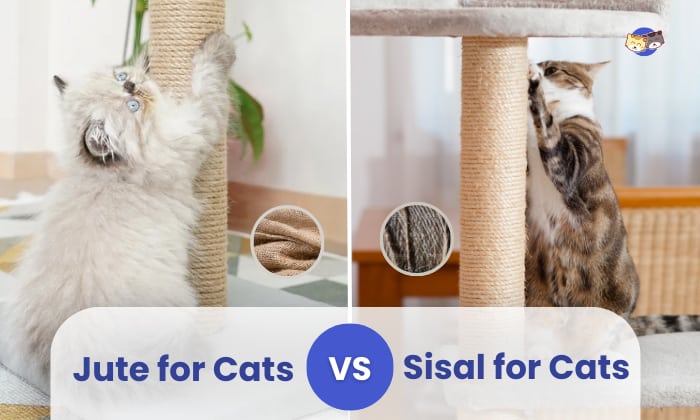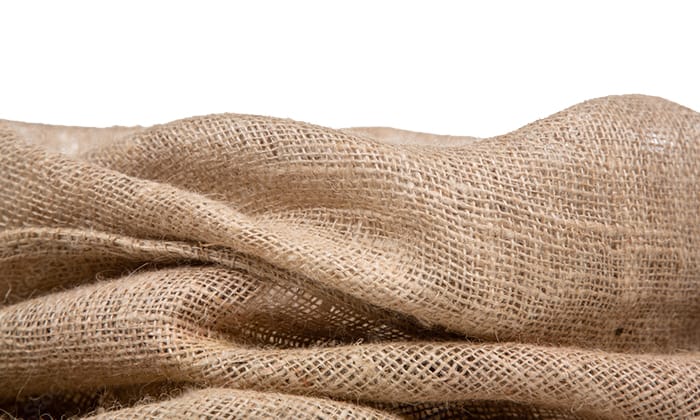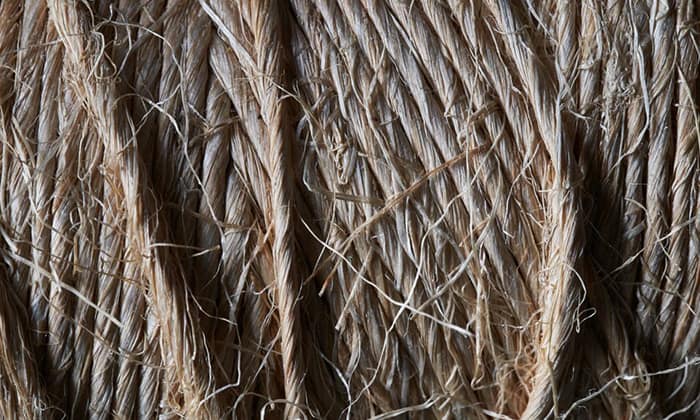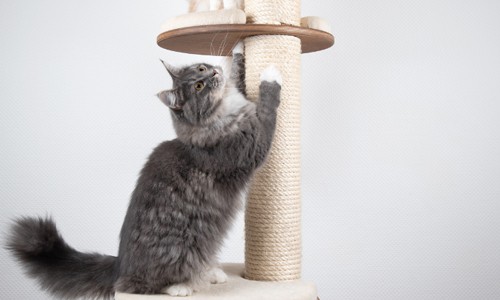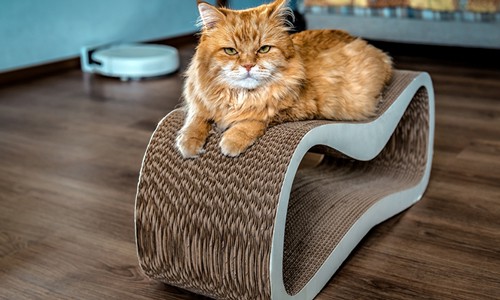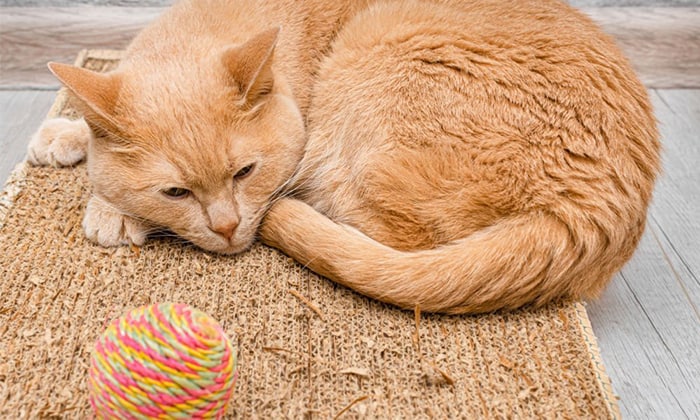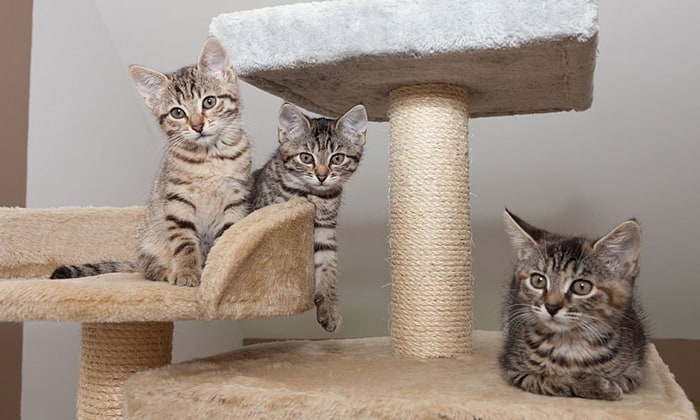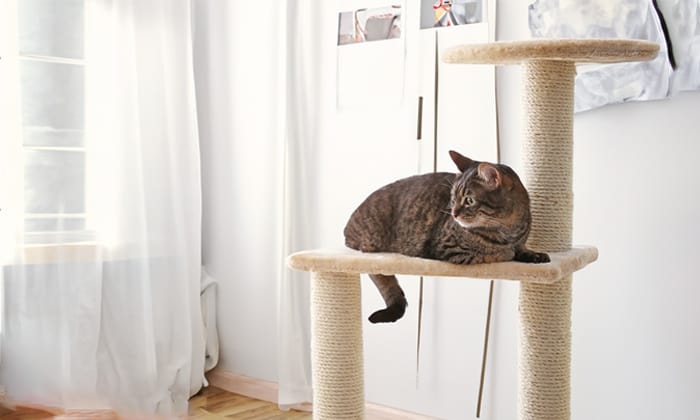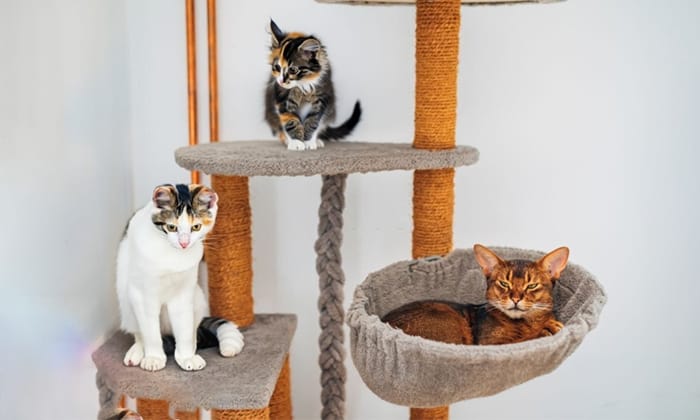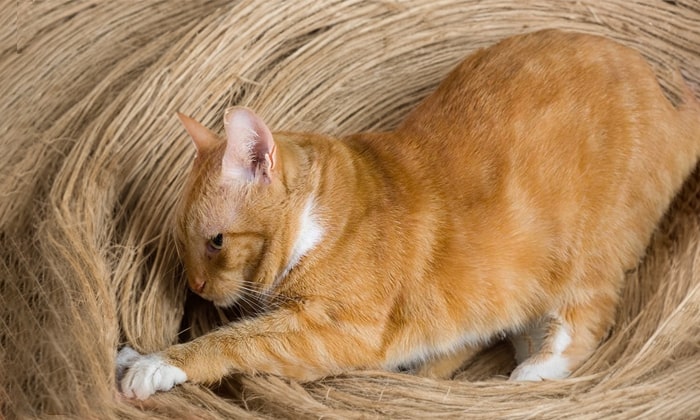Cats like scratching posts. The reason is that these tools allow them to trim their claws to a certain length. The posts available in the market feature either jute or sisal as their primary materials.
However, sisal is more common than jute regarding tools for scratching for cats. This bears the question – is jute a safe material for cats? This article will discuss jute vs sisal for cats to help feline owners choose the right scratch post.
Table of Contents
What is Jute Fiber?
Jute is a long, soft plant fiber primarily used to make bags, sacks, and textiles. Corchorus, the plant where this fiber comes from, grows in warm countries like Bangladesh, China, India, and Thailand.
When bundled together, jute fibers create a durable material used for various purposes. One of these purposes is jute scratching posts for felines.
The durability of the jute material allows it to withstand your pet’s sharp claws without breaking.
What is Sisal Fiber?
Like jute, sisal is a natural fiber harvested from the leaves of agave plants. The plant is native to Mexico, specifically in Sisal, Yucatan, which was once the major center of sisal production.
Sisal fiber is famous for its durability and versatility. For instance, a woven sisal rope makes a strong cat scratching post.
Apart from ropes, sisal fiber is commonly used in marine applications due to its resistance to saltwater-caused deterioration.
Difference Between Jute and Sisal
Jute and sisal fibers are both eco-friendly and renewable materials. But it is worth noting that there are differences that set the two apart.
1. Source
Jute fiber is derived from the Corchorus plant, which is native to the Indian subcontinent. Countries like Bangladesh and India primarily cultivate this plant and turn them into materials like ropes, rugs, and sacks.
Meanwhile, sisal fiber comes from the Agave sisalina plant, which is native to Mexico. Countries like Brazil, China, and Kenya also learned to cultivate Agave, contributing to the mass production of sisal fiber.
2. Appearance
Jute is a long, soft, and shiny fiber. On the other hand, sisal fiber is a bit thicker and stiffer than jute.
In terms of color, jute fiber is usually golden to beige, while sisal is off-white to light cream.
3. Durability
Sisal is more popular as a cat scratcher material. When you compare jute vs. sisal twine, you’ll see the latter is more durable.
This fiber boasts high tensile strength and deterioration resistance.
While jute fiber is also durable, it is less robust than sisal materials. For this reason, people often use it for lighter-duty products.
4. Texture
Jute fibers boast a smooth and soft texture. They only become rough and coarse when spun into threads.
However, the individual fibers are fine, silky, and delicate.
Sisal fibers, meanwhile, are rough and coarse. While jute feels fine, sisal feels stiff and rugged to the touch.
Sisal fibers produce thick and inflexible materials when spun together.
5. Uses
People commonly use jute to make bags, textiles, and sacks. It is also a popular material for packaging and construction.
On the other hand, sisal is more durable, so people use it to make heavy-duty materials like ropes, cords, twines, and marine applications. There are also mats, carpets, handicrafts, and home improvement items made of sisal fibers.
6. Pros and Cons
Jute Scratch Posts
|
Pros |
Cons |
|
Durable |
Jute may not be as attractive as other cat-scratch materials. |
|
Jute is softer than sisal, making it more comfortable for cats to use |
Jute materials look rustic and are not as aesthetically pleasing as modern cat scratch posts. |
|
Jute fibers are naturally-occurring materials, making them safe for felines. |
The rough texture of jute may cause sensitivity to some felines. |
|
The roughness of jute helps cats satisfy their scratching instinct. |
|
Sisal Scratch Posts
|
Pros |
Cons |
|
Sisal is known for its durability, so it lasts long, no matter how much your pet scratches it. |
Sisal is rougher than jute, so your pet may feel uncomfortable scratching it. |
|
Cat scratch posts made of sisal fiber are cat-friendly, as the material is derived from a plant. |
Sisal materials can shed fibers after your cat heavily scratch them, thus reducing their effectiveness. |
|
Sisal is considered hypoallergenic, so it will not irritate your pet. |
Sisal scratch posts can be expensive. |
|
Sisal fibers don’t absorb smells. |
|
7. Cost Comparison
The rule on market prices is that the more durable something is, the higher its price will be. Therefore, sisal cat scratch posts are more expensive than jute.
Apart from quality, the availability of sisal and jute fibers also impacts their cost. Sisal fibers have limited availability, making them pricier than jute.
Finally, the process of extracting sisal fibers from Agave leaves to make sisal fabric rolls is labor-intensive. Manufacturers must strip, clean, and dry the leaves to extract these fibers.
Meanwhile, the process of extracting jute fibers is simpler, making jute cat scratch posts more affordable.
Which Scratch Post is Better?
Without a scratch post, you might see your cat scratch wood. You may also see your cat scratching wood furniture, which results in expensive damage.
While there are many things for cats to scratch on in your home, getting a dedicated tool is ideal.
But which, between jute and sisal, is a better scratching material?
Sisal scratch posts are better in terms of durability. Since sisal fibers are coarser, thicker, and more durable than jute, they will last longer no matter how much your pet uses them.
It is worth noting that choosing a sisal-made vertical cat scratcher is more expensive than getting a jute one. However, the higher cost is worth it, as your pet will not quickly wear out its scratching tool.
Getting an expensive scratch post is also better than letting your cat claw things.
What should I consider when picking a scratching post?
There are various factors to consider when choosing a scratching post for your feline friend:
- Material. Is your cat a heavy scratcher? If yes, a sisal scratch post is better than jute.
- Size & Stability. If you opt for a vertical scratch post, choose one that is tall and stable enough to support your cat’s weight. It should also allow your pet to fully stretch its legs.
You may also get a jute or sisal fabric by the yard if you want a flat scratch material.
- Durability. Look for a scratching post that is sturdy and made with durable materials. Cats can be quite vigorous when scratching, so a well-constructed post will withstand their scratching sessions.
- Cost. Consider your budget when selecting a scratching post. Investing in a quality scratching post can be beneficial in the long run, as it will be more durable and effective in redirecting your cat’s scratching behavior.
Frequently Asked Questions
Reasons why cats scratch & how to stop the behavior?
Scratching is an instinctive feline behavior. While it is normal, there are reasons why your cat is scratching wood furniture.
One reason is that your pet is marking its territory. Aside from leaving a visual mark, your pet leaves scent markers on its paws.
Another answer to “Why do cats need scratch posts?” is felines use them to groom their claws. It is your pet’s way of keeping its claws short, sharp, and healthy.
While there is no way to stop your pet from scratching, you can provide it with a cat scratch post. This way, you can redirect its scratching behavior to something that is actually meant for scratching.
Where can I buy sisal fabric for scratching posts?
Sisal scratching posts are widely available. So, you can get one either online or at your local pet store.
Can I use both jute and sisal products for my cat?
Yes, you can use jute and sisal for your cat. Since both jute and sisal are natural materials, they are generally safe for your feline friend.
How do I clean and maintain jute and sisal cat products?
Use a white vinegar and water solution to remove stains from your jute or sisal cat products. Then, use a microfiber cloth to scrub the stained area.
If the product has fur stuck on it, you can use a vacuum cleaner to remove it.
Are jute and sisal safe for cats with allergies?
Feline owners commonly ask, “Is jute rope safe for cats?” or “Is sisal rope safe for cats?” Fortunately, both materials are generally safe for cats, even those with allergies.
Conclusion
As a feline owner, you may have wondered what the best kind of rope for cat scratching posts is. If you’re choosing between jute and sisal, the latter is the better option.
Between jute vs sisal for cats, the latter is tougher, so your cat cannot easily ruin it. On the other hand, if you need a replacement jute, this material quickly deteriorates.
Regardless of your choice, it is worth noting jute and sisal are safe for your pet.

I am Amy Sawy, a Doctor of Veterinary Medicine (DVM) graduate from the University of Kansas. y husband, Dr. Plummer, and I own a veterinary clinic in Phillipsburg, Kansas. In addition to my professional background, I am a devoted pet owner myself, with a household that includes dogs, rodents, and most notably, cats – a total of five felines in my home.
In 2020, I joined an organization as a professional writer, leveraging my experience and collaborating with my team to deliver the most valuable information for your cat’s care.


